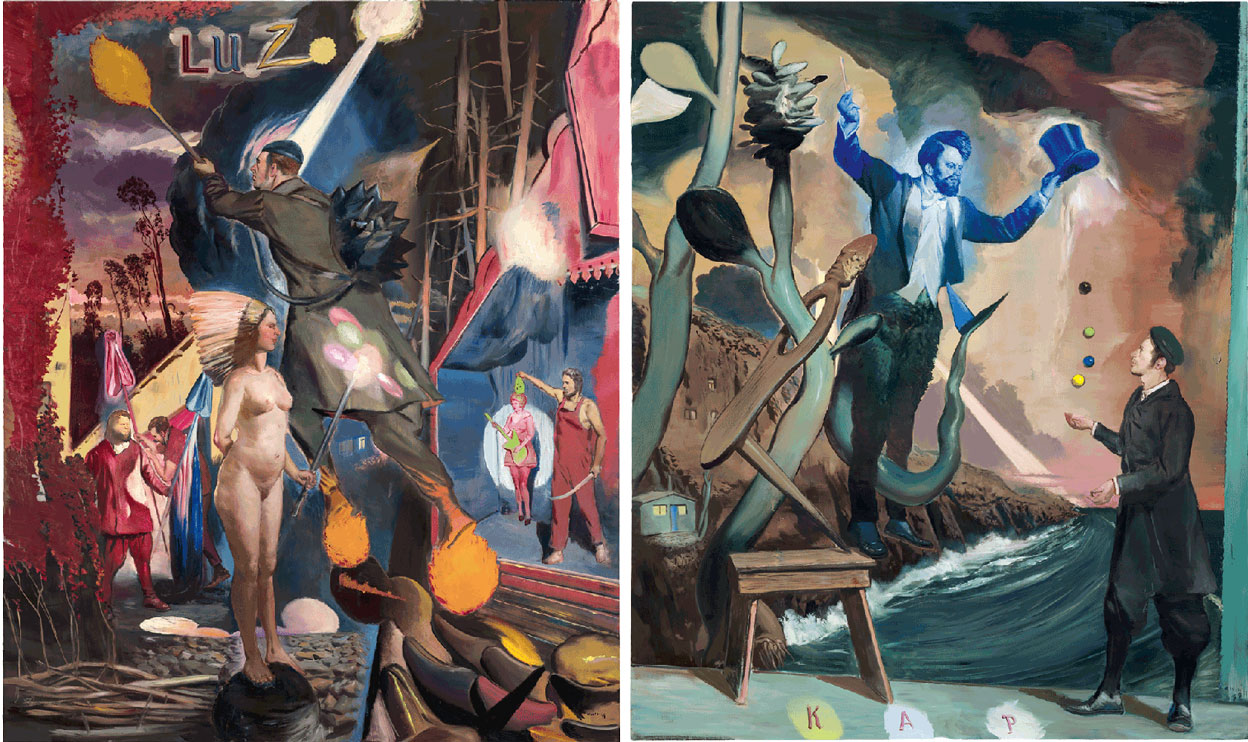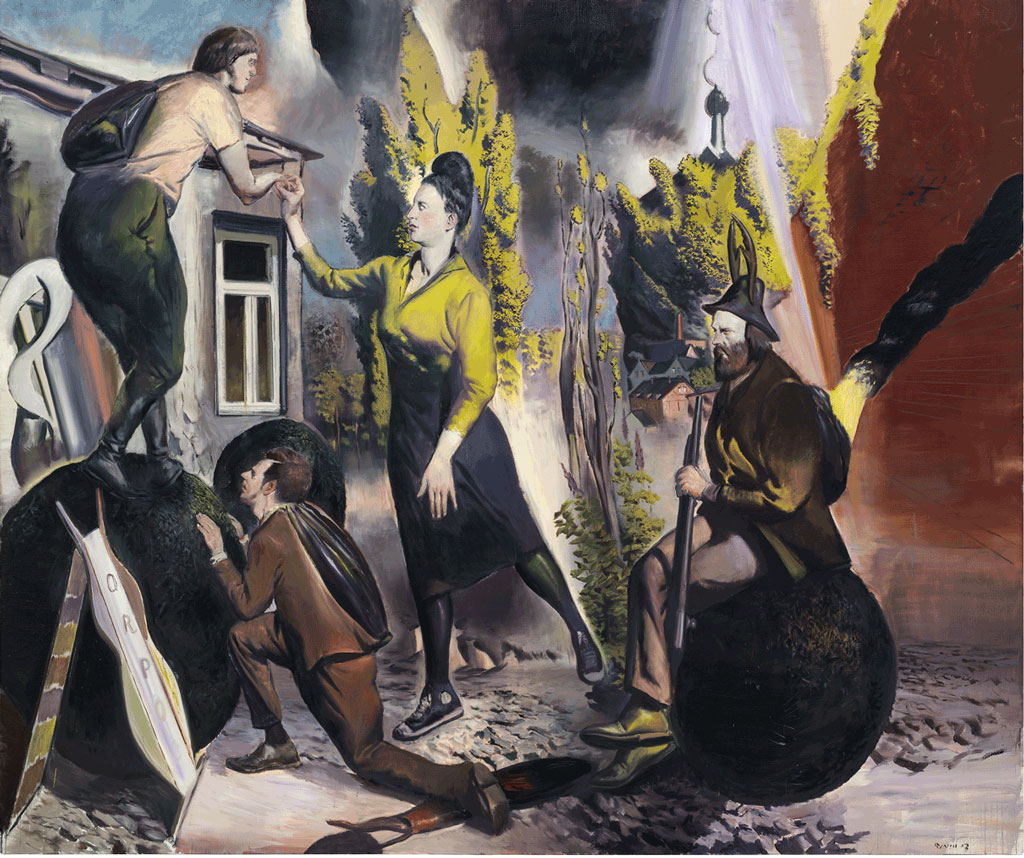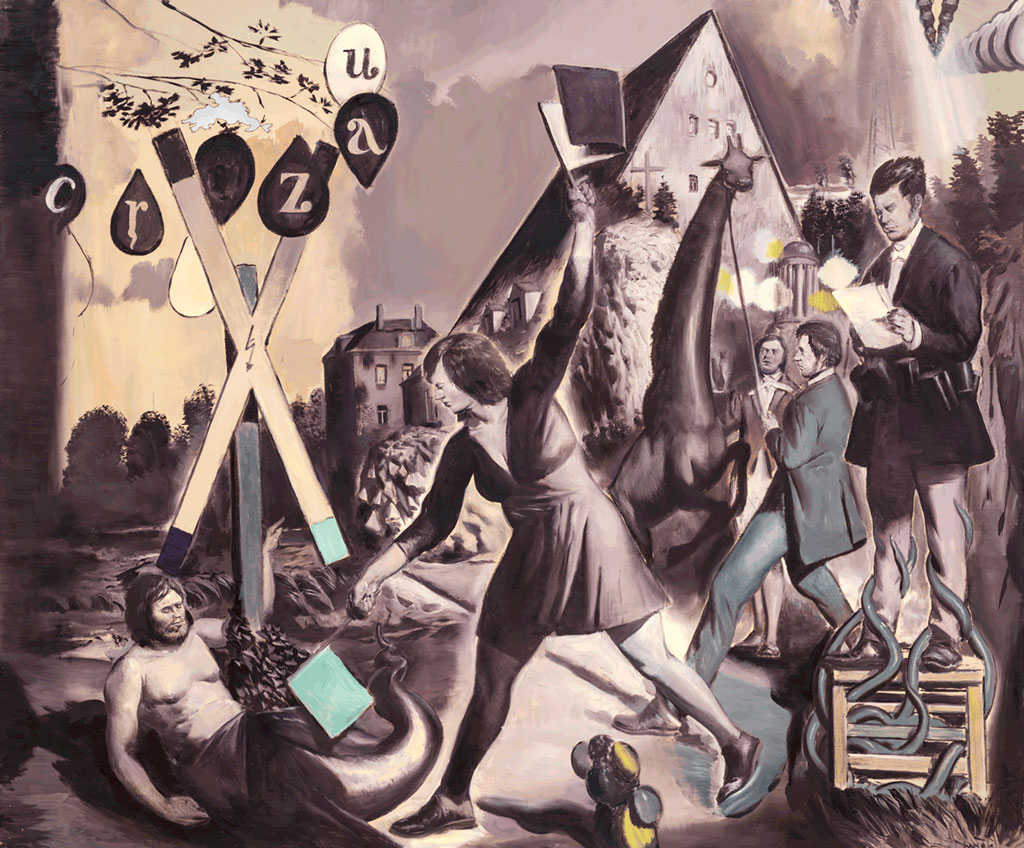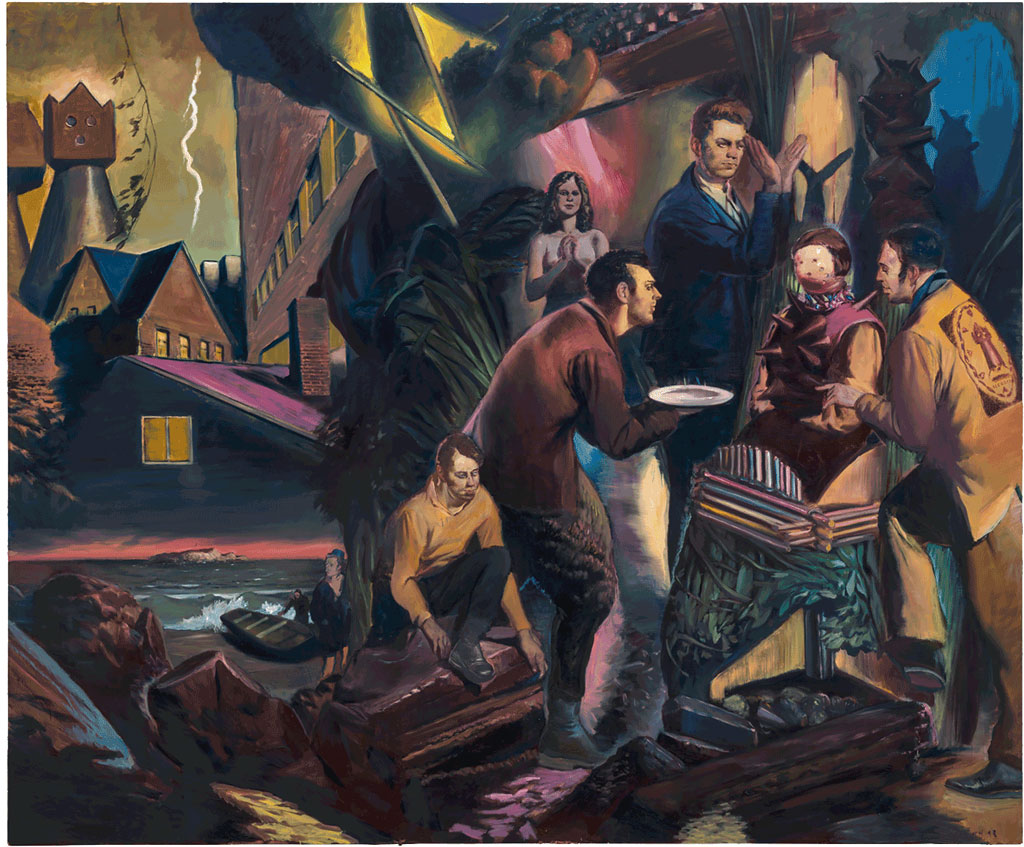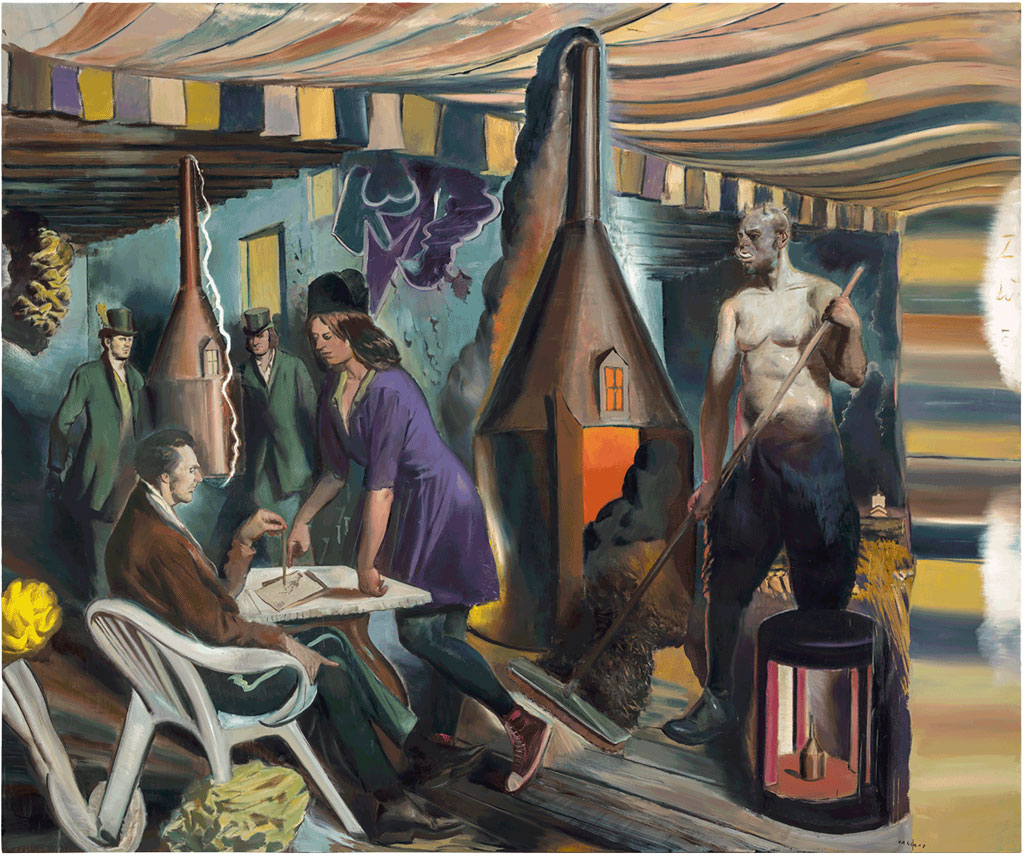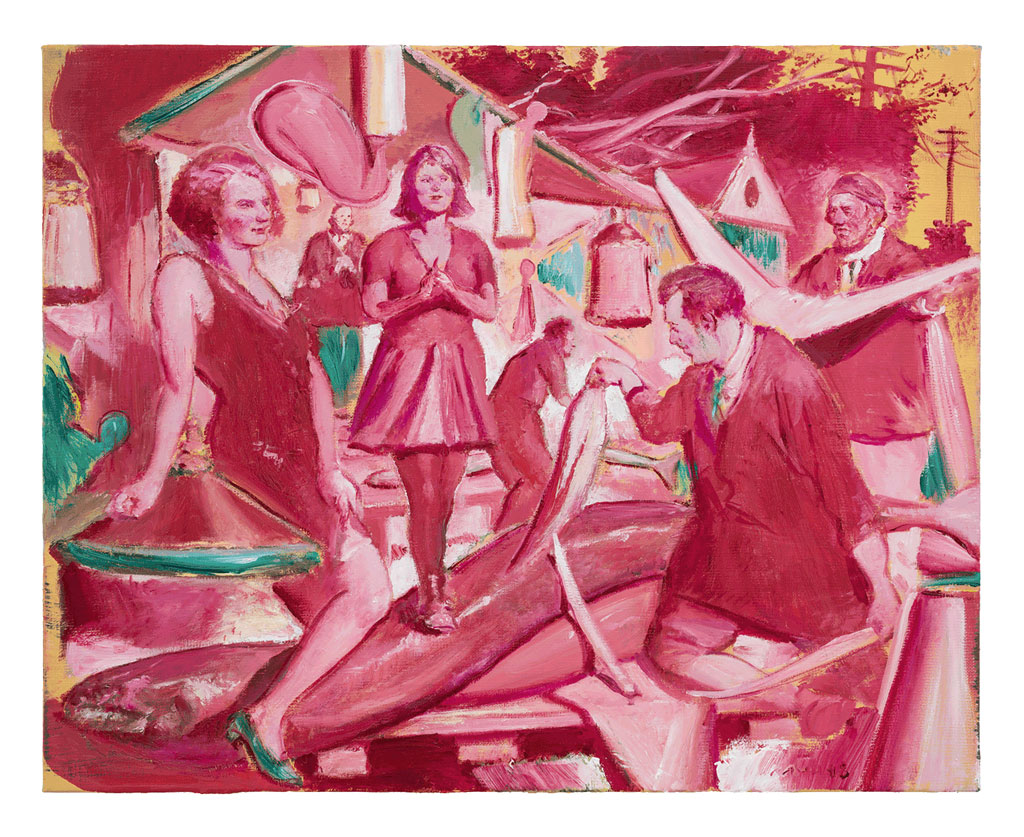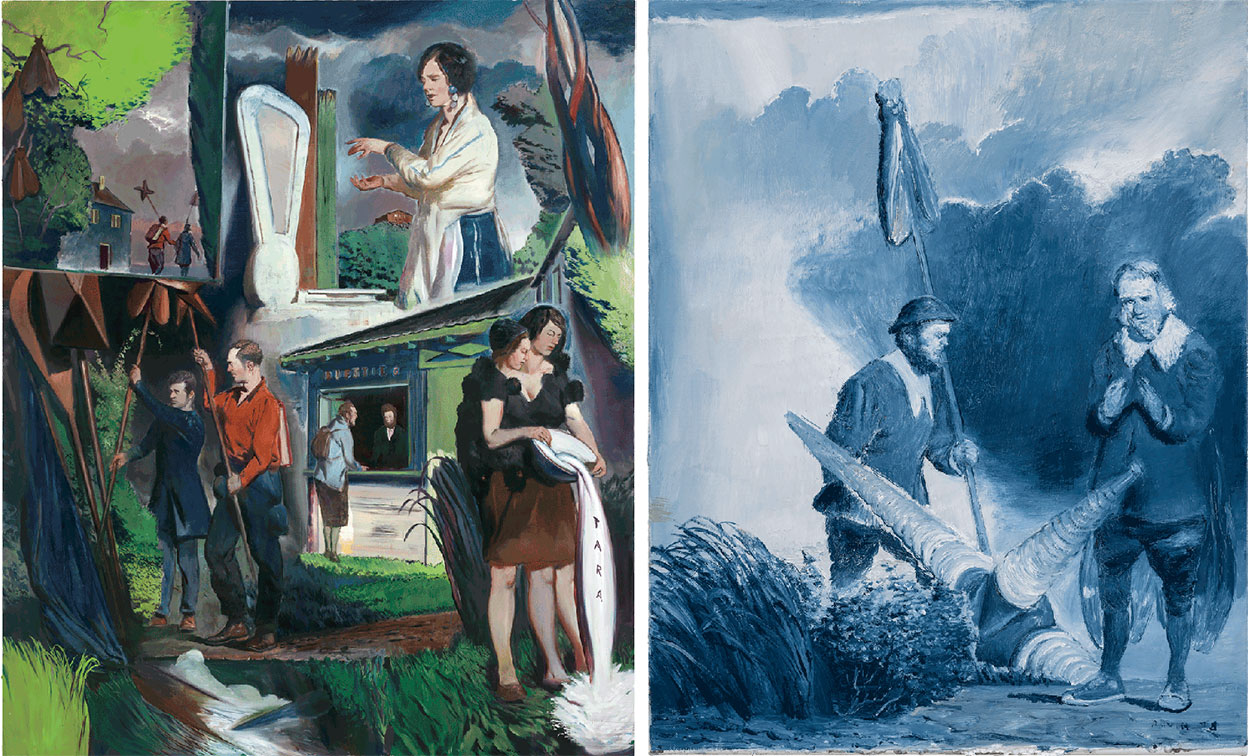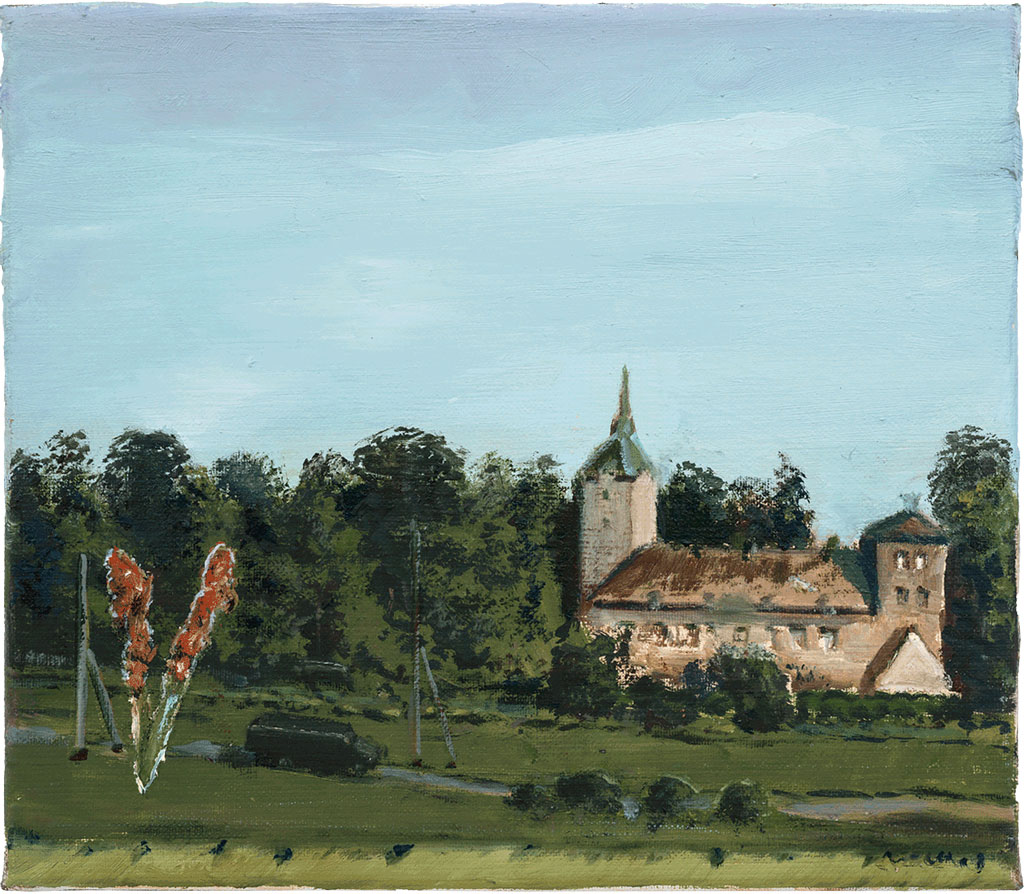ART-PRESENTATION: Neo Rauch-Propaganda
 Born in 1960 in Leipzig, Neo Rauch began developing his own style of figurative painting since the beginning of his career as an artist. Nowadays, Rauch is greatly known for his visually captivating compositions that bring together surrealism and the traditions of figurative painting into an entirely new level of visual experience.
Born in 1960 in Leipzig, Neo Rauch began developing his own style of figurative painting since the beginning of his career as an artist. Nowadays, Rauch is greatly known for his visually captivating compositions that bring together surrealism and the traditions of figurative painting into an entirely new level of visual experience.
By Dimitris Lempesis
Photo: David Zwirner Gallery Archive
Rauch’s paintings are richly colored, sumptuous compositions that contain a repertoire of characters, settings, objects, and motifs that are at once realistic and familiar while also appearing enigmatic and inscrutable. They often hint at broader narratives and histories, yet they are dreamlike and frequently contain disparate and overlapping spaces and forms. Visually, they call to mind modernists like Max Beckmann and Balthus as well as old master painters such as Pieter Bruegel and Tintoretto. Though his art is highly refined and executed with considerable technical skill, Rauch himself stresses the intuitive, deeply personal nature of how he works. As the artist notes, “My process is far less a reflection than it is drawing from the sediments of my past, which occurs in an almost trancelike state”. The titles that the artist selects for his works are cryptic and multivalent, adding further layers of complexity and intrigue to the viewing experience. Sometimes using puns or double entendres in German or other languages, the artist considers the title part of the generative process of the work. Neo Rauch in his solo exhibition “Propaganda” introduces fifteen new paintings (eight large-scale canvases and seven smaller, more intimately scaled works) that continue the artist’s exploration of figuration, dreamlike imagery, and the ambiguous nature of meaning in visual art, while also suggesting new directions in his practice. Notably, while Rauch regularly depicts his figures and structures in overlapping spaces and configurations, in some of the larger works, such as “Luz” (2018), the saturation of the canvas with characters, objects, and surrealistic forms rendered at different scales and in conflicting arrangements has a collage-like quality, a figurative scrapbook of the artist’s personal iconography. The works also testify to the range of ways Rauch applies color in his art. Several paintings use a highly restricted palette, while others contain an expansive array of colors. One painting “Der Aufschneider” (2018), featuring a figure who appears to hold a knife or saber and cuts at an eel-like creature or form, is rendered almost entirely in rose and amaranth shades of red with complementary green highlights. “Sperre” (2018), by contrast, which portrays a woman holding small flags assaulting or attacking a shirtless hybrid human figure against a bucolic backdrop, appears as though largely drained of color with select incidents of yellow and aquamarine. He renders figures and structures in plush earth tones in “Die Herrin” (2018), a work that depicts a group of figures huddled around and attending to an inanimate female figure, while adding highlights of electric pink, yellow, and orange, creating a dynamic tension between more traditional painterly tones and colors that call to mind street art and electric signs. Neo Rauch’s paintings are richly colored, sumptuous compositions that contain a repertoire of characters, settings, objects, and motifs that are at once realistic and familiar while also appearing enigmatic and inscrutable. They often hint at broader narratives and histories—seemingly reconnecting with the artistic traditions of realism—yet they are dreamlike and frequently contain disparate and overlapping spaces and forms. Visually, they call to mind such celebrated modernists as Max Beckmann and Balthus as well as old master painters such as Pieter Bruegel and Tintoretto. Though his art is highly refined and executed with considerable technical skill, Rauch himself stresses the intuitive, deeply personal nature of how he works. As the artist notes, “My process is far less a reflection than it is drawing from the sediments of my past, which occurs in an almost trancelike state.”1 The titles that the artist selects for his works are cryptic and multivalent, adding further layers of complexity and intrigue to the viewing experience. Sometimes using puns or double entendres in German or other languages, the artist considers the title part of the generative process of the work.
Info: David Zwirner Gallery, 5-6/F, H Queen’s, 80 Queen’s Road Central, Hong Kong, Duration: 26/3-4/5/19, Days & Hours: Tue-Sat 11:00-19:00 (Tue 26/3: 17:00-20:00), www.davidzwirner.com
